This Elegant European City Is a Trap
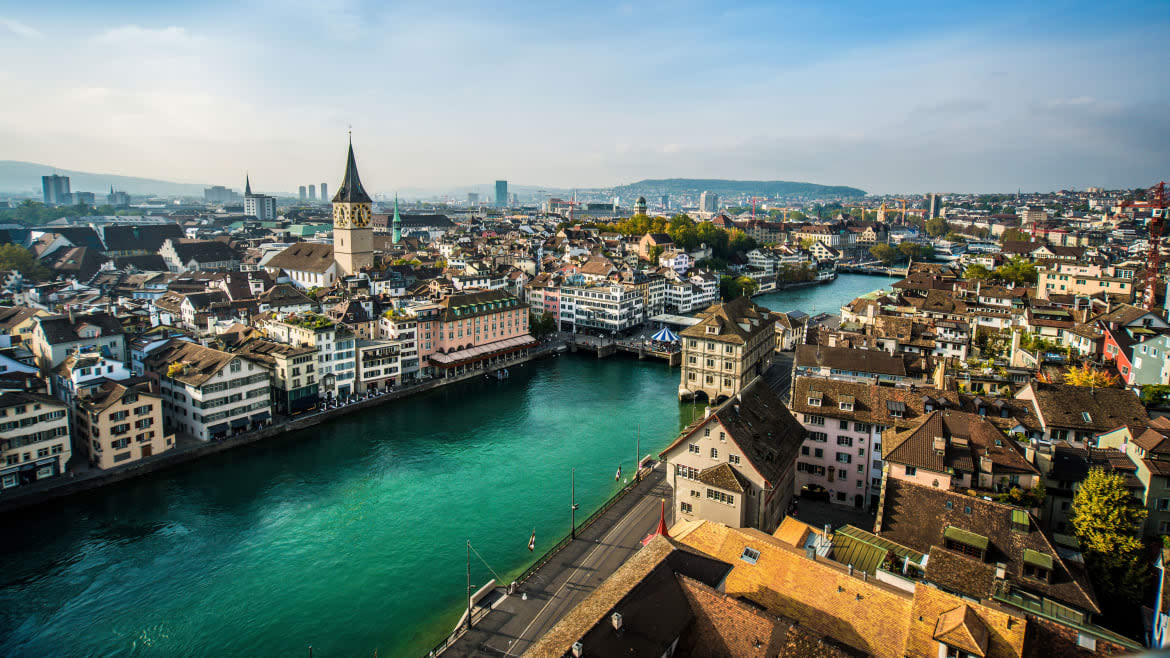
It was only once submerged in the icy water, my reproductive organs having sought shelter, that I had an epiphany—I love it here.
The “here” in this case was the Swiss city of Zurich, which until that moment had been merely a perfectly charming destination to explore. The northern city has sharp architecture, fantastic cultural attractions, and good food. But, it is the lake that made me realize that not only did I love my visit here, but I could live here. Thus, this city famed around the world for business is the latest selection in our twice-a-month series on underrated destinations, It’s Still a Big World.
Maybe it’s because of the pandemic, but I’ve started to feel that the sign of a great destination is if I’d like to come back and spend a bigger chunk of time. With Zurich that is definitely the case. While I explored much of what the city center had to offer by way of sightseeing, there were people I met who were getting up for sunrise hikes, going to some cool new restaurant, or to an electronic dance in a warehouse. None of which I got to this time around.
The first thing that becomes apparent upon arriving in Zurich is just how easy everything is—a quick cheap train ride from the airport to the city center. This being Switzerland, there are many luxury hotels to choose from, but I was staying at the 25Hours Hotel Longstrasse, an almost painfully hip modern hotel where the sleek Europaallee development hits the iconic former red light district of Longstrasse. I say painfully hip because while everything about the hotel was spot-on—spacious chic rooms, a rooftop sauna, great restaurant—the Cinchona Bar in the lobby was brimming with people at night which made me painfully aware that I was too old and tired after a day of sightseeing.
To get to the hotel, you walk from the central station through the Europaallee development, which is a great initiation into how I’ve started succinctly summing Zurich up—it’s just nice. The development of slick modern buildings looks similar to many other soulless contrived neighborhoods throughout the world, but instead this is probably what those countless urban planners and architects hoped their renderings would look like in real life. There are cute shops, restaurants, and cafes in buildings with a sometimes dizzying mix of materials. It might make you do a double take, but one of the public amenities is a water feature that is, no lie, a giant puddle. But it’s an expensive looking puddle.
Welcome to Switzerland.
And speaking of places looking how people hope they will look based on renderings: That night I walked over to Frau Gerolds Garten, the former industrial site turned into a garden terrace filled with food stands, little shops, and the Freitag tower. Wolfing down a gyro and then some ice cream, I was blown away by how uncontrived this whole setup felt and how full of people it was without feeling like an Instagram gimmick. (In fact, almost nobody was taking pics.)
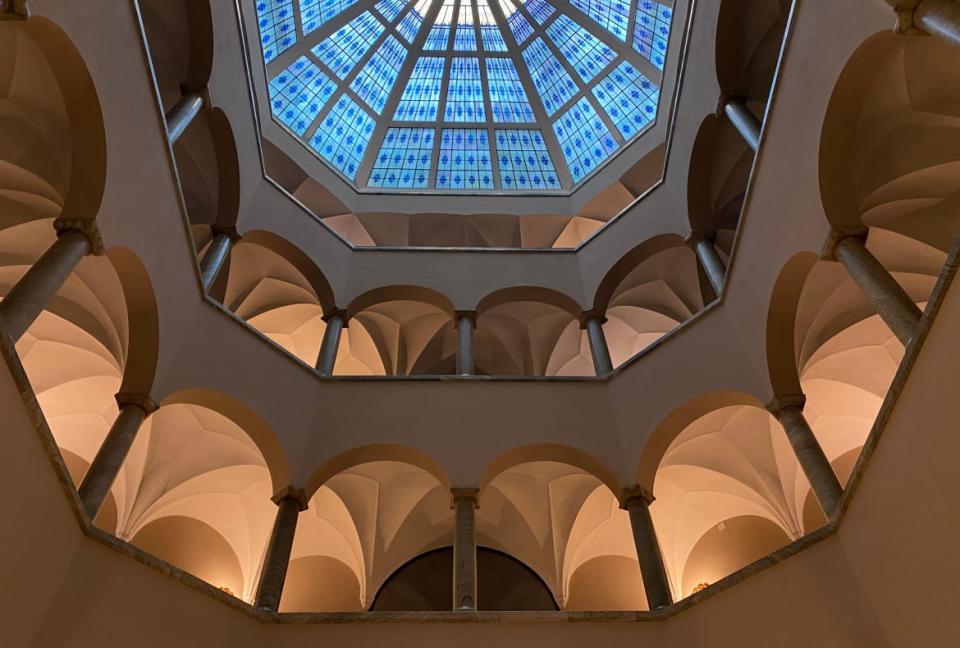
The atrium of the Peterhof.
A light fog filled Zurich every morning during my early October stay, and then gradually dissipated as the day wore on to reveal a clear blue sky. Waking up early on Sunday, I took advantage of a city still asleep to try my luck at getting into an architectural wonder that has been on my list for a while—the Peterhof, which Credit Suisse recently sold for nearly $400 million to build up cash after paying the U.S. government a $2.6 billion fine. I was armed with the usual array of wheedling strategies one usually deploys with security at an interesting building—”I’m an architecture student,” etc., etc.—but to my surprise the building was just open. Welcome, again, to Switzerland. The star attraction is the atrium with its dizzying galleries that seem to fuse early Art Deco with a sort of Protestant Gothic, all working their way up to a magnificent colored glass dome.
After getting my architecture fix, I walked a couple blocks more to get my sweet fix at the storied Sprungli—pancakes and a strawberry milkshake to start the day! Then I continued across the river and up the hill to the Kunsthaus, Zurich’s main art museum. The main building, a historic Secession-ish building from the early 20th century, houses the core historic collection (do not miss the Giacometti paintings in the fabulous staircase area), which does a fantastic job of centering the work of Swiss artists Hodler, Bocklin, and Fuseli. An addition currently showcases “The 2000 Sculpture” by Walter De Maria, which is made up of 2,000 white plaster rods, and a new building designed by starchitect David Chipperfield houses the museum’s modern art collection as well as the controversial collection of industrialist and arms manufacturer Emil Bührle (who has been accused of taking advantage of Jewish art collectors during the Nazi era).
Starving after standing and gazing for a few hours, I grabbed lunch at the elegant Neue Taverne, known for its delicious (albeit small) vegetarian dishes. After that it was over to the Seefeld neighborhood along Lake Zurich for the Corbusier Pavilion, a museum dedicated to the architect and also the last building he designed. Just up the hill is the Zollikerstrasse, which is lined with a number of grand homes. One in particular, the Villa Patumbah, an eclectic Belle Epoque mansion, is worth admiring from the outside, but unless you speak German and schedule one of the group tours, it’s not entirely a necessary place to tour inside if you’re crunched for time.
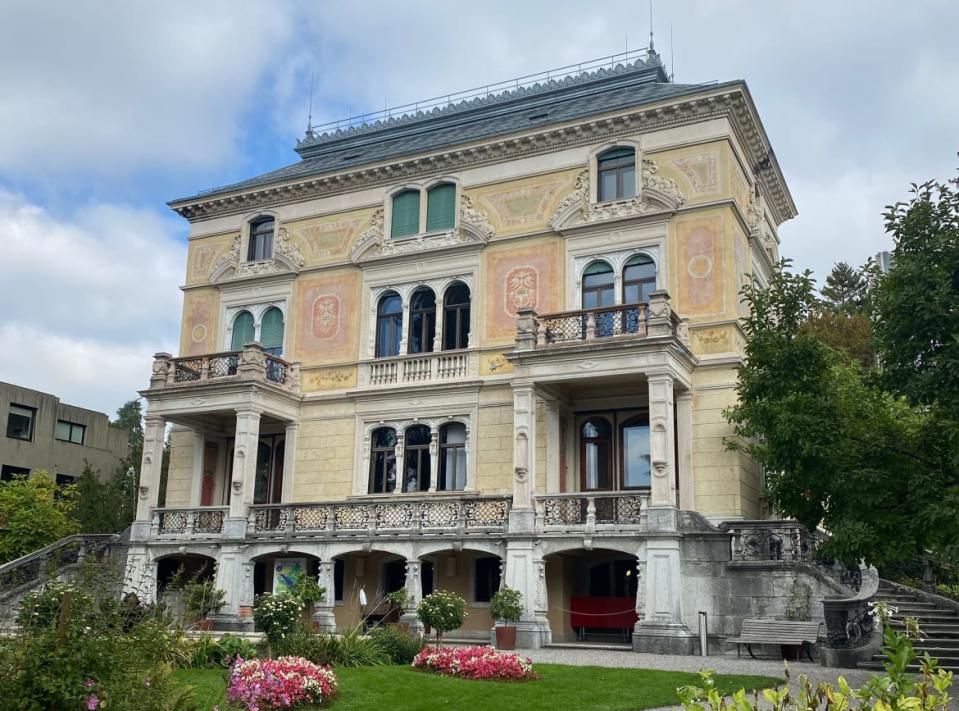
Villa Patumbah
Zurich has long been considered one of the best places in the world to live, and after spending a few days there, I understood why a friend called living there a trap. You have just enough culture and action in the city that you don’t feel like you’re sacrificing too much of a big city life, but with the lake and the mountains you can escape in a way only a handful of cities in the world allow. (Side note: it isn’t just the lake. The rivers running through the city and feeding into it are clean enough to swim in.)
On that second night, I was determined to experience the lake, which meant sauna time.
On the edge of the lake is a hut at the end of a dock, and just after the sun set my friends joined me for something I was a little nervous for—five rounds of rotating between a stifling sauna and then jumping into the lake. I want to say the “icy lake” but the water isn’t icy yet, so that would be an exaggeration, but the air outside was certainly frigid. Inside the saunas, there is almost a sadistic pleasure (especially if you find yourself with some Russians) in making it so hot your eyes burn. And while I worked very hard to control my face when body parts I wasn’t used to being in my face (the saunas are co-ed) ended up very close to my face as people came and went, I couldn’t help but feel that this experience was something everybody should do in this age of perfect body saturation on social media. In between the sauna rooms and the lake is a warm lounge area where people are just chilling naked on chairs, some resting, others grading papers and reading.
The whole session went until just after 10 p.m., and afterward I sauntered home and summoned enough energy to eat some takeout before passing out.
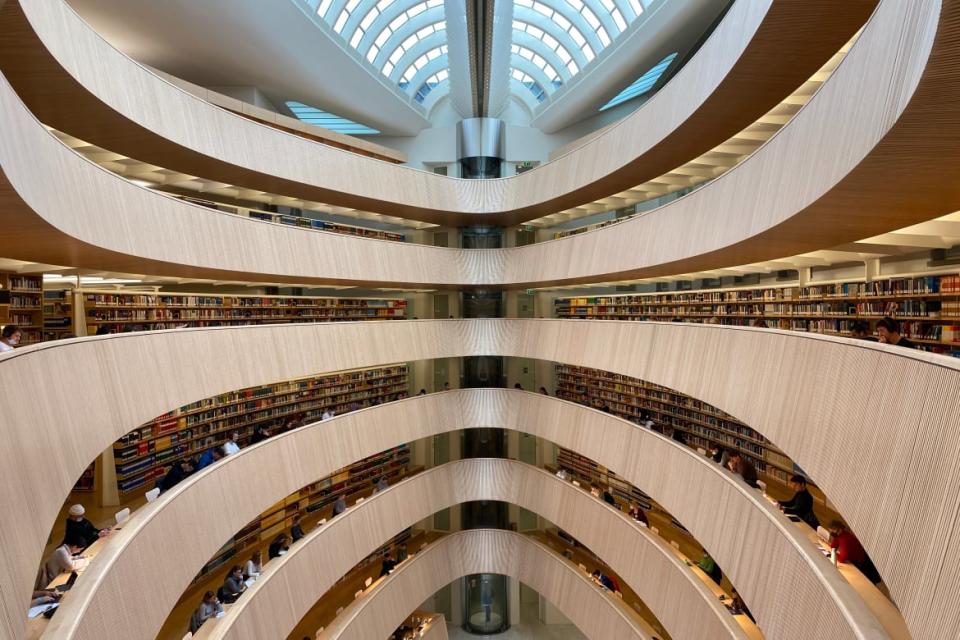
Calatrava's Law Library
The following morning, the city wreathed again in fog, I set out for another architectural wonder—this time starchitect Santiago Calatrava’s stupendous Law Library at the University of Zurich, which is one of my favorite pieces of contemporary architecture I’ve come across lately. After that it was down to Fraumunster Church to see the stained glass windows by Chagall, completed while the artist was in his eighties, as well as one by Giacometti (which, I must say, is underwhelming next to Chagall’s).
The day was capped off with an afternoon picnicking in the Reiter and Belvoir Parks followed by a sunset swim in the lake off a boathouse dock. It’s pretty hard to beat splashing around as the city gets drenched in a golden light with the Alps as a backdrop.
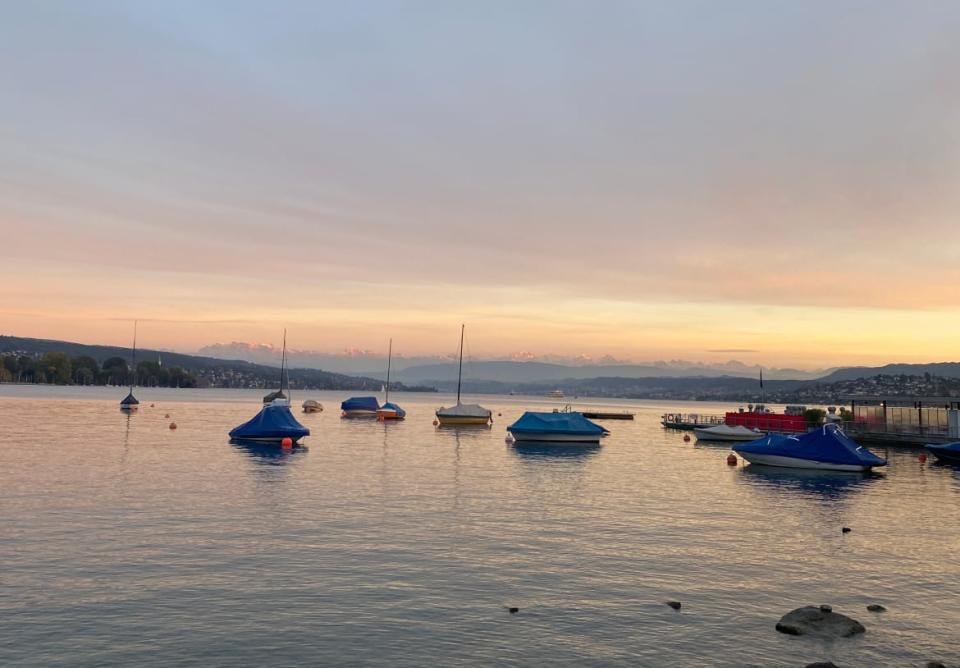
A swim at sunset with the Alps as a backdrop.
My final meal was at Rosaly’s, a Zurich staple for a few decades that mixes traditional Swiss food with contemporary dishes. One of the things I ate makes me blanch to even think about saying out loud so I can’t write it. But it was oh so delicious, as was everything I ate there.
Before I went to Zurich, people I told I was going there typically fell into one of two buckets. Most, who had never been or only passed through quickly, didn’t understand why. Others, who had lived there for a little bit or spent time there because of work or a lover, told me I was going to love it. There’s probably even a German word for how this was the city that all these people in big cities like London and Paris always talk about moving to and having a more chill life but never actually pull the trigger.
But who knows? I just might.
Get our top stories in your inbox every day. Sign up now!
Daily Beast Membership: Beast Inside goes deeper on the stories that matter to you. Learn more.

